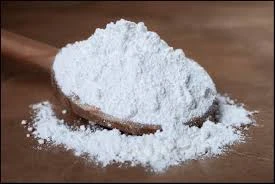
formic acid hcooh
Understanding Formic Acid (HCOOH) Properties, Applications, and Safety
Formic acid, chemically represented as HCOOH, is the simplest carboxylic acid and a significant compound in various chemical and industrial applications. Its name is derived from the Latin word formica, meaning ant, as it was first isolated from ant venom. This article aims to explore the properties, diverse applications, and safety considerations associated with formic acid.
Physical and Chemical Properties
Formic acid is a colorless liquid with a pungent odor, similar to vinegar. It has a boiling point of 100.8 °C and a melting point of 8.4 °C, making it a liquid at room temperature. Its molecular structure consists of a carbon atom bonded to a carboxyl group (-COOH) and a hydrogen atom, which contributes to its acidic nature. In terms of solubility, formic acid is highly soluble in water, alcohol, and ether, facilitating its use in aqueous solutions.
One of the notable properties of formic acid is its ability to act as both an acid and a reducing agent. It can donate a proton (H+) easily, which is characteristic of acids, but it can also be oxidized to carbon dioxide. This duality makes it an essential compound in many chemical reactions and industrial processes.
Industrial Applications
Formic acid finds widespread use across various industries. One of its primary applications is in agriculture, where it is employed as a preservative and antimicrobial agent in silage production. Silage, a fermented feed for livestock, can benefit from formic acid's ability to inhibit unwanted microbial growth, ensuring that the feed remains nutritious and safe for animals.
In the textile industry, formic acid is used in dyeing processes and as a pH regulator. Its ability to lower the pH of dye baths enhances dye uptake in fabrics, resulting in vibrant and long-lasting colors. Additionally, the leather industry utilizes formic acid in tanning processes, where it helps to stabilize proteins in animal hides, producing durable leather products.
formic acid hcooh

Formic acid is also significant in the field of organic chemistry. It can be employed as a building block for synthesizing various chemicals, including formates, which are used as solvents and intermediates in chemical reactions. Furthermore, in the production of pharmaceuticals, formic acid serves as a reagent in various chemical syntheses.
Moreover, with the growing interest in green chemistry, formic acid has emerged as a potential hydrogen carrier for fuel cell technology. The process of formic acid dehydrogenation can release hydrogen, which can be used in fuel cells to produce energy, highlighting its potential role in sustainable energy solutions.
Safety Considerations
Although formic acid is a valuable compound, it is essential to handle it with care. It is classified as a hazardous substance and can cause skin and eye irritation upon contact. Inhalation of vapors may lead to respiratory issues. Therefore, when working with formic acid, appropriate personal protective equipment (PPE) such as gloves, goggles, and respiratory protection is recommended. Additionally, proper ventilation is crucial in workplaces where formic acid is used to minimize inhalation risks.
In case of accidental exposure, it's important to rinse affected areas with plenty of water and seek medical attention if necessary. Proper storage and disposal methods should also be adhered to, as formic acid can pose environmental hazards if released into ecosystems.
Conclusion
In summary, formic acid (HCOOH) is a versatile and essential compound with diverse applications ranging from agriculture and textiles to organic synthesis and energy production. Understanding its properties and safe handling practices is crucial for those working with this chemical. As industries increasingly focus on sustainability, formic acid's role in green technologies may become more prominent, showcasing its importance in both current and future applications.
-
Pure Sodium Dichloroisocyanurate Dihydrate | Powerful DisinfectantNewsAug.29,2025
-
Industrial Chemicals: Quality & Purity for Every IndustryNewsAug.28,2025
-
Nitrile Rubber Honoring Strict Production StandardsNewsAug.22,2025
-
Aspartame Ingredients Honoring Food Safety ValuesNewsAug.22,2025
-
Fertilizer for Balanced Plant NutritionNewsAug.22,2025
-
Cyanide Gold Processing with High Purity AdditivesNewsAug.22,2025
-
Formic Acid in Textile Dyeing ApplicationsNewsAug.22,2025
Hebei Tenger Chemical Technology Co., Ltd. focuses on the chemical industry and is committed to the export service of chemical raw materials.
-

view more DiethanolisopropanolamineIn the ever-growing field of chemical solutions, diethanolisopropanolamine (DEIPA) stands out as a versatile and important compound. Due to its unique chemical structure and properties, DEIPA is of interest to various industries including construction, personal care, and agriculture. -

view more TriisopropanolamineTriisopropanolamine (TIPA) alkanol amine substance, is a kind of alcohol amine compound with amino and alcohol hydroxyl, and because of its molecules contains both amino and hydroxyl. -

view more Tetramethyl Thiuram DisulfideTetramethyl thiuram disulfide, also known as TMTD, is a white to light-yellow powder with a distinct sulfur-like odor. It is soluble in organic solvents such as benzene, acetone, and ethyl acetate, making it highly versatile for use in different formulations. TMTD is known for its excellent vulcanization acceleration properties, which makes it a key ingredient in the production of rubber products. Additionally, it acts as an effective fungicide and bactericide, making it valuable in agricultural applications. Its high purity and stability ensure consistent performance, making it a preferred choice for manufacturers across various industries.





